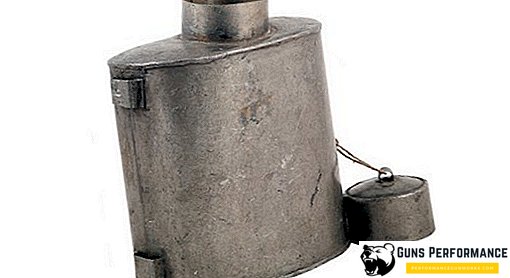The Templars (from the French "templiers" or "temple" - "templar", "church", "temple") were also called the impoverished knights of Christ and the Temple of Solomon. They were among the first who began to form military-religious orders. Thus, the Order was founded in 1119 by a small group of knights, headed by Hugh de Payne.
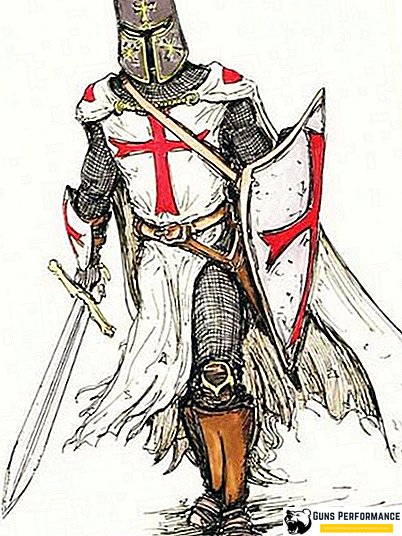
This followed the First Crusade, to maintain the new Kingdom of Jerusalem, surrounded by defeated Muslim neighbors, and to ensure the protection of many European pilgrims on their way to Jerusalem after its conquest. However, it is worth making a distinction between the actual creation of the Order of the Knights Templar, the beginning of his life activity and the official recognition from the Pope of Rome, when he became an independent monastic fraternity.
A brief history of the spiritual and knightly Knights Templar
When the First Crusade (1096-1099), which supposed to liberate the Holy Land from Muslim rule, was completed, something like a Christian state was created on the territory of the Eastern Mediterranean, which was called the Kingdom of Jerusalem. Small state formations also appeared along with Tripoli, Antioch, the Cilician kingdom, the county of Edessa, and the Assassins.
These Christian lands and found the name - the Latin East, and the main metropolitan city became known as Jerusalem.
It was completely natural that the European population began to systematically make pilgrimages to holy places. However, robbers, robbers, dashing people who unceremoniously and unscrupulously engaged in robbing pilgrims, and from time to time and killing them, roamed the roads. Thus, the road to the east to visit the holy places seemed deadly event.
Foundation of the Knights Templar
All this chaos lasted for almost a twenty-year period, until one day in 1118 a small detachment with noble knights passed through dusty Palestinian roads. It was he who proceeded to protect the pilgrims from robbers and any rabble. They did their work from the bottom of their hearts, not for fear, but for conscience. The knights treated the robbers mercilessly, and for the believers laid a safe road to the holy places.
This small knight's team was headed by a man named Hugh de Payne. It was a native of the ancient French noble dynasty, which at one time faithfully served its state. At the age of fifteen, Hugo was knighted. Since then, the young man joined the caste of professional warriors - the French knights. The young man was lucky to become a member of the crusade and the liberation of Jerusalem.
Versions of the Order of the Templars
Home Hugh de Payne did not return, because he decided to stay in the land of Palestine. Having found the same as the unmoveds himself, he united with them, and together they stood up to defend the wanderers. According to one version, there were nine knights known as nova militia christi, who united in France, where they made a vow to protect the pilgrims. After that, they returned to Palestine.
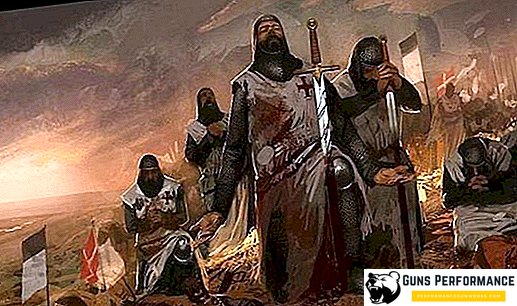
Many of them were so poor that they lacked money even to purchase a sufficient number of horses. Often two riders could sit on one horse. However, this all lasted for about a year, until the combat team, free of charge protecting the travelers, was not noticed at the court of King Baldwin II of Jerusalem.
The king himself favored the brave knights, and those under his protection decided to unite in the order. At the same time, they took the oath of allegiance not to the monarch, but to the Jerusalem Church of the Holy Sepulcher. It can be said that it was in this way that the knights of the temple or the templars appeared. In French, it was pronounced - the Templars. Precisely so, in 1119 the Order of the Knights Templar appeared, which was headed by Hugh de Payne.
The activities of the Knights Templar
At first there was the order of the Templars, almost no one knew, but over time his fame began to grow. Noble knights were allowed to go to Europe and recruit to the order of noble people. European kings liked the idea. All of them treated the knight templar with respect, who, guided only by the call of their hearts, stood up for the pilgrims who were marching to the Holy Land.
On the Templars unexpectedly showered a whole series of favors. All this was expressed in the gift of lands and castles. Thus, the poor knights got rich instantly.
Special generosity distinguished the French nobility. The fact is that the great Master of the Knights Templar belonged to their compatriots. Subsequently, the order formally began to talk as a French. And this despite the fact that in its ranks there were people of very different backgrounds.
Bulla Pope
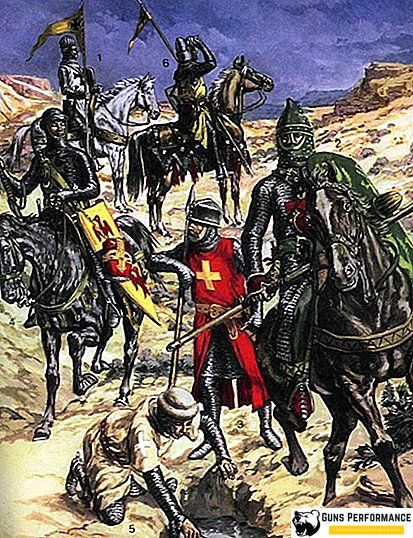
In 1139, during the time of the second master Robert de Craon, a bull was issued in the office of Pope Innocent II, in which the knights of the temple were exempted from all existing taxes. They were allowed to freely visit any other countries, except Palestine, Christian countries, to buy land, real estate, as well as conduct financial activities aimed at strengthening their society. With all this, the noble knights were supposed to report only to the Pope himself.
Because of this, the Templars had complete independence. Their fate was in the hands of only God and the Pope. Heads of state and high-ranking holy fathers were not allowed to get involved in the affairs of the order. Moreover, they were forbidden to order what to do or control financial activities.
Money makes money
Generosity and altruism, of course, are the finest human qualities. However, it has long been noted that money motivates people to multiply their wealth, and therefore make money. This could not be avoided and the Knights Templar. Being educated people, the defenders of the pilgrims became more and more engaged, first of all, in financial activities. Affected these unlimited rights, along with complete lack of control.
The Templars began to lend money, and thus become moneylenders. They lent huge sums of money at 10-15%. While the Jews and Italians, this service was not less than 40%.
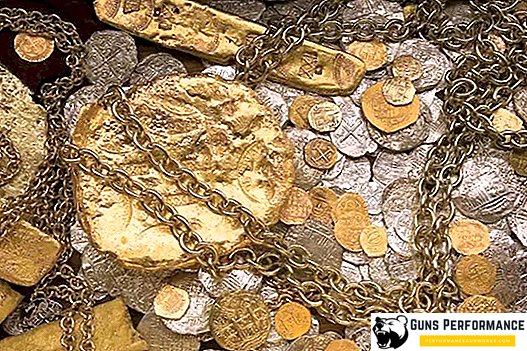
Little by little, the newly-born usurers had debtors who were both kings, dukes and commoners. The Templar Knights unleashed their stormy financial activity throughout the European continent. Treasury of the order began to be filled with cash flows. So they began to enrich themselves just before our eyes.
Construction of cathedrals, castles and roads
In addition to banking, the templar began to build temples and castles. In total, in the entire history of the Order they built 150 cathedrals and 76 castles, which was more than a serious indicator of income. There is a version that in this way they, among other things, invested in real estate.
Templar knights were not alien to road construction either. In those days, European roads were in an extremely poor condition. Moreover, they were all private.
The situation was aggravated by brigands who lived in a wooded area. They often engaged in the robbery and murder of unarmed people.
The templar managed to build excellent roads that were guarded and had inns, but that the most amazing customs fee was not taken from the people. All their roads were free and completely safe.
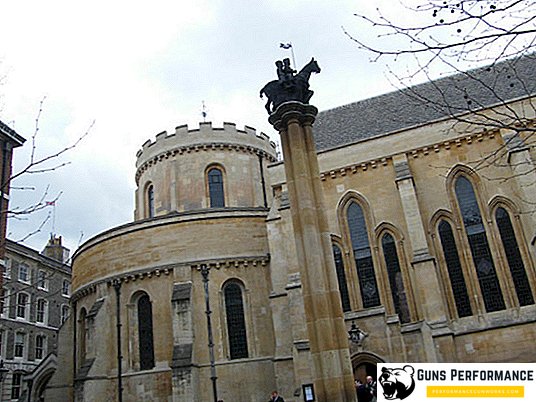
Charity was an important factor for the knights of the temple. Each of them was instructed to meet with the needy three times a week and freely give them food. This obliged to make the statute of the Order of the Templars, and all this was carried out without question.
The rigid hierarchical structure of the Order of the Templars
In the order itself there was a rigid hierarchical structure. Headed by his great master, who had unlimited power. The knights, who were equal partners in the order, numbered about a thousand people.
The community was replenished with chaplains, clergymen who performed additional duties. Knight squires together with servants were considered members of the powerful union. All were given a vow of silence. They were all forbidden to disclose to outsiders about the internal activity of the Templars.
It was a secret society with a rigid power vertical, independence, its finances and the ability to fill it all at its discretion. However, it did not interfere in the affairs of the states in which their property was located. The order was not persons close to the monarchs. Thus, he had no influence on their policies.
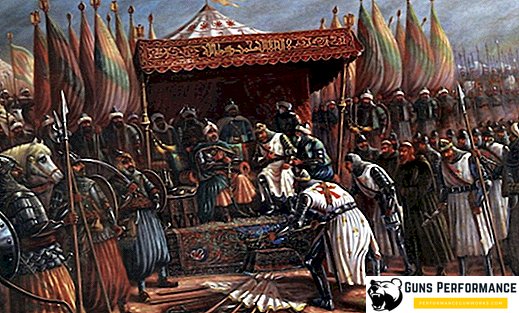
Leaving the Order of Palestine
The main headquarters of the order was located in Jerusalem until the very end of the 13th century. Since 1291, the Latin East no longer existed. The kingdom of Jerusalem, like other small states, was destined to fall. Muslims managed to regain this territory after almost 200 years.
The knightly order was forced to leave Palestine. He settled forever in the European countries, which were Spain, France, Germany, as well as England. As a result, the order was left without its main bastion. Very soon, his ill-wishers, who could not survive the wealth and power, decided to take advantage of this situation.
Defeat of the Knights Templar
The main ill-wisher, the French king Philip the Fair (1268-1314), was not haunted by the wealth of the order. He was not a supporter of tyranny and sought to deal with all controversial issues in court. However, due to the fact that he was above the judiciary and fully controlled it, it would have been easy to foresee which side the court will be on.
With the Templars, Philip IV also decided to act strictly according to the law. The autocrat too wanted to take away all the riches of the order and at their expense engage the replenishment of the state treasury. However, for this it was necessary to find a good reason. And they introduced themselves in August 1307.
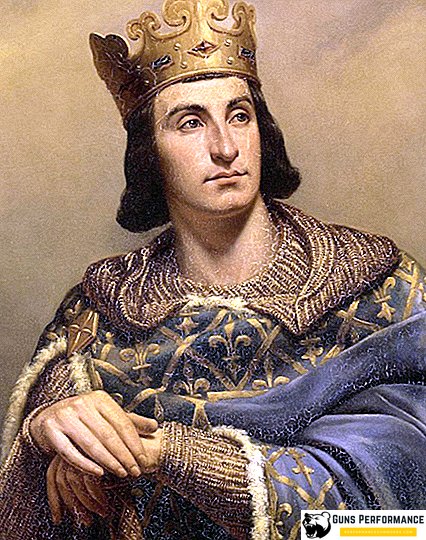
One day, the king received a denunciation that one criminal convicted of the death penalty had some important information of national importance. The offender told the crowned personage about the terrible things that worked noble knights. He had the opportunity to sit in the same cell with the same "suicide bomber", who turned out to be one of the members of the Order of the Templars.
Shortly before the execution, he decided to relieve his soul and told about what was going on in their castles. As it turned out, the Knights Templar, with the help of their huge financial opportunities, planned to seize power on the European continent. They had debtors from among the most influential nobles, because the revolution was a matter of technology. Moreover, the templar knights were engaged in the seduction of boys, spitting of crosses, as well as the seduction of virgin peasant women. Thus, they were not true Catholics, but servants of Satan.
All this information was carefully documented, and became the reason for Philip the Beautiful to send an appeal to the Holy See. The credibility of the prisoner's testimony was more doubt, it was unclear how the templar found himself in the royal dungeon, and he also had a death sentence, because the members of the order were not controlled by the monarchs, and they did not have the right to arrest them, much less to judge and execute them.
Destruction of the Knights Templar
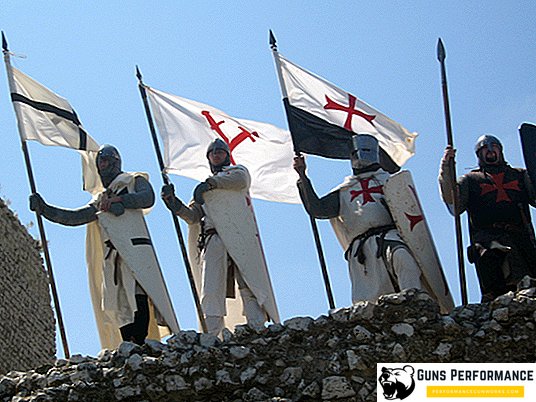
However, Pope Clement V did not care for this essential detail. He hinted to Philip that he would not disturb him and, in fact, authorized the arrest of all the Templars. As soon as the monarch’s hands were untied, he ordered the arrest of all French Templars. It was decided to hold this top secret action in one day. So on the morning of Friday, October 13, 1307, all the members of the order were arrested in France.
They were thrown into prison, tortured and tortured. The torture of the Templars was so sophisticated that people could not stand them and gave any confession. Confessions had to be given to the Grand Master of the Order, Jacques de Molay, although he later renounced them.
In total, 543 knights were arrested in France. Philip demanded that European monarchs also arrest the Templars who were in their states, but they did not listen to Philip. Only in England temples were exiled to monasteries, and in Scotland, on the contrary, many Templars were lucky to escape.
The charges that the Inquisition brought forward
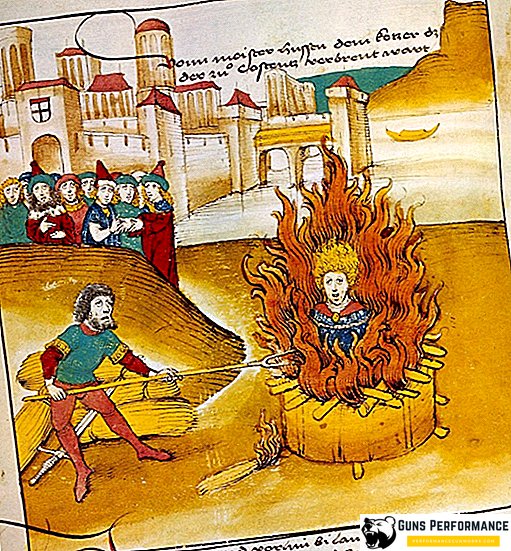
The charges that the Inquisition put forward to the Templars were as follows:
- They bowed to some cat, sometimes appearing at a gathering;
- In the provinces, they possessed one-three-faced idols, their own heads and human skulls;
- They bowed to these idols at their gatherings;
- They honored these idols, who were to them representatives of the Lord and Savior;
- They claimed that the head could save them and make them rich;
- Because of the idols, the order received all the wealth;
- Because of the idols, the earth was bearing fruit, and the trees were blooming;
- They tied their heads to idols or touched them with short ropes, after which they put them on their bodies under their shirts;
- When making newcomers to the order, they were given these ropes;
- Everything was done because of awe before idols.
Basically there were ten charges, like the ten commandments.
End justifies the means
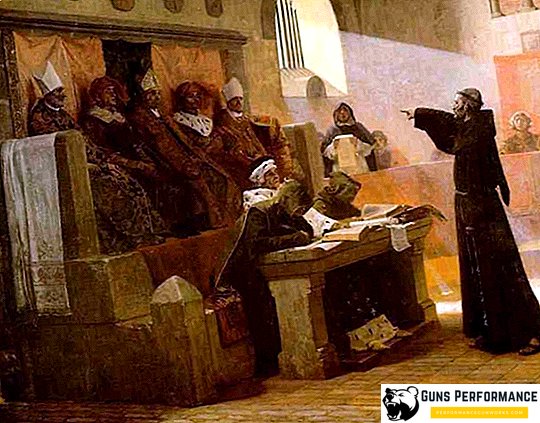
Conducting investigations against members of the order went for several years. In October 1311, that is, four years after the arrests, it was decided to hold a trial at the Vienne Cathedral. On it, the clergy and the authorities of the Vatican, led by the Pope, decided to dissolve the once powerful order, and distribute the property to other knights-monks. These were the Hospitallers, better known as the Knights of Malta.
The biggest jackpot with finance and real estate went to Philip the Fair, as compensation for court costs. As a result, he achieved his goals and found what he wanted. Then began the trials of the Templars. Mostly they were sentenced to life terms. Others received long prison sentences, but only a few were able to go free in old age.
The execution and the curse of the last Grand Master Templar
Grand Master Jacques de Molay, along with Geoffroy de Charnay, was sentenced to be burned. On March 18, 1314, the sentence was carried out. On fire, Jacques de Molay managed to curse, the Pope and Philippe, which was exactly fulfilled.
Clement V died a month after the execution. King Philip died in November of the same year at the age of forty-six as a result of extensive cerebral hemorrhage (stroke), although the king always had excellent health and never had any complaints. Under strange circumstances and unclear reasons, his three sons died over fourteen years after the death of their father. They were all not fortunate enough to leave their successors, and the dynasty was destined to end.

Mysteries of the Knights Templar
Most people immediately saw the cause of the mysterious deaths themselves in the curse, which put Jacques de Molay, because behind the Templars always dragged the train of the unknown, the mysterious. Popular rumor called them owners of magical knowledge.
Many even believed that the Templars have the Shroud of Turin and even the Holy Grail. And some researchers admit it, because the knights of the temple had almost two hundred years to live in Palestine. Their generosity, along with devotion to faith, was a matter of great respect in the Christian world.
Thanks to this, all those who kept shrines and relics in their home, calmly passed them on to the Templars. No one doubted the noble knights. All were convinced that invaluable Christian treasures were not destined to abyss, and they would be in safe hands.
With the liquidation of the order, everything changed. The Holy Grail may have been hidden in Scotland, and the Shroud of Turin is incomprehensible as it was discovered in France. Papa and Philip succeeded in abolishing the Order, but he continued his life in Europe.
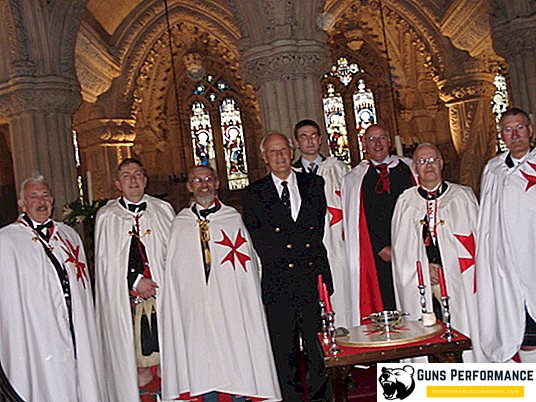
Nobody excludes that the order secretly continued its existence. It is possible that even now the templar knights continue their activities hidden from prying eyes, because all these people had secret magical knowledge. Actually, the craving for everything occult, like a magnet, attracts true spiritual seekers to itself, and courage, selflessness and devotion to the faith of the Templars remained in people's hearts.







